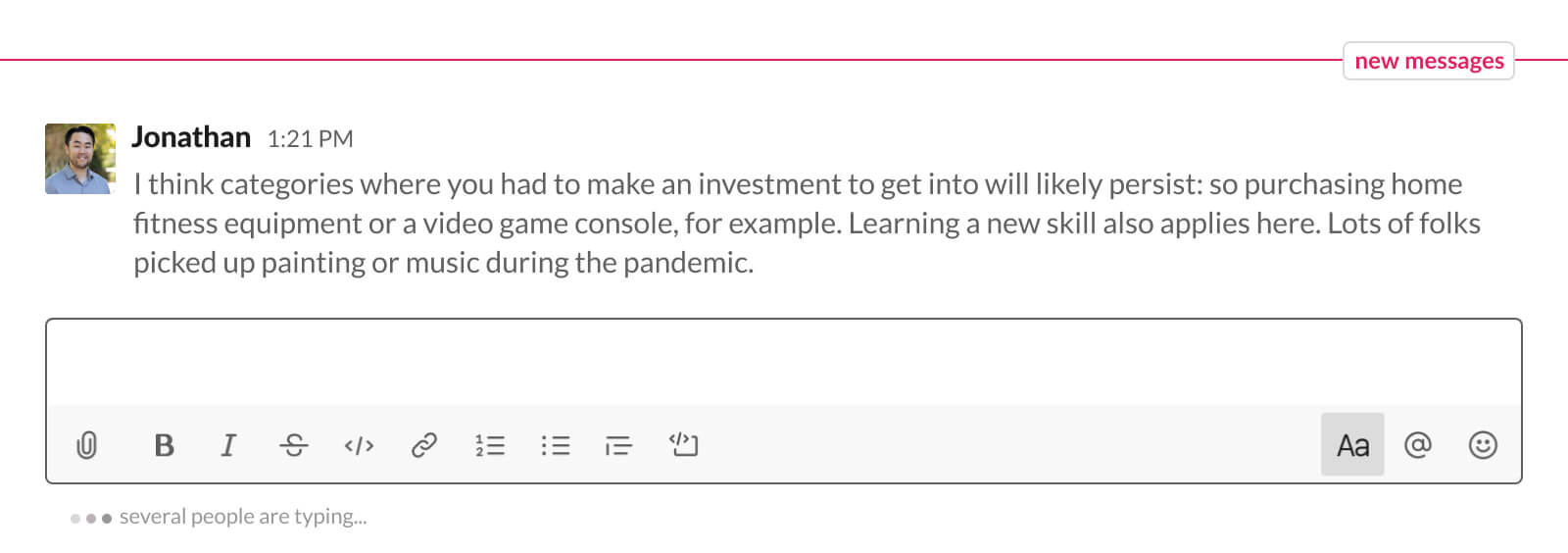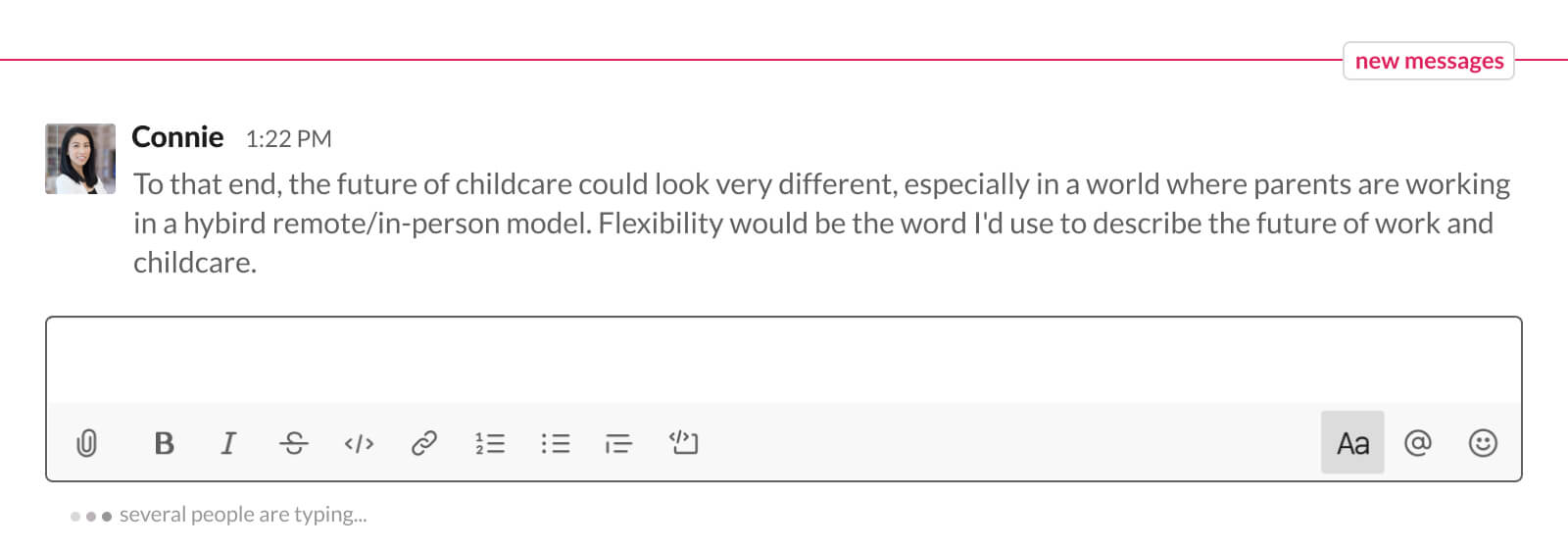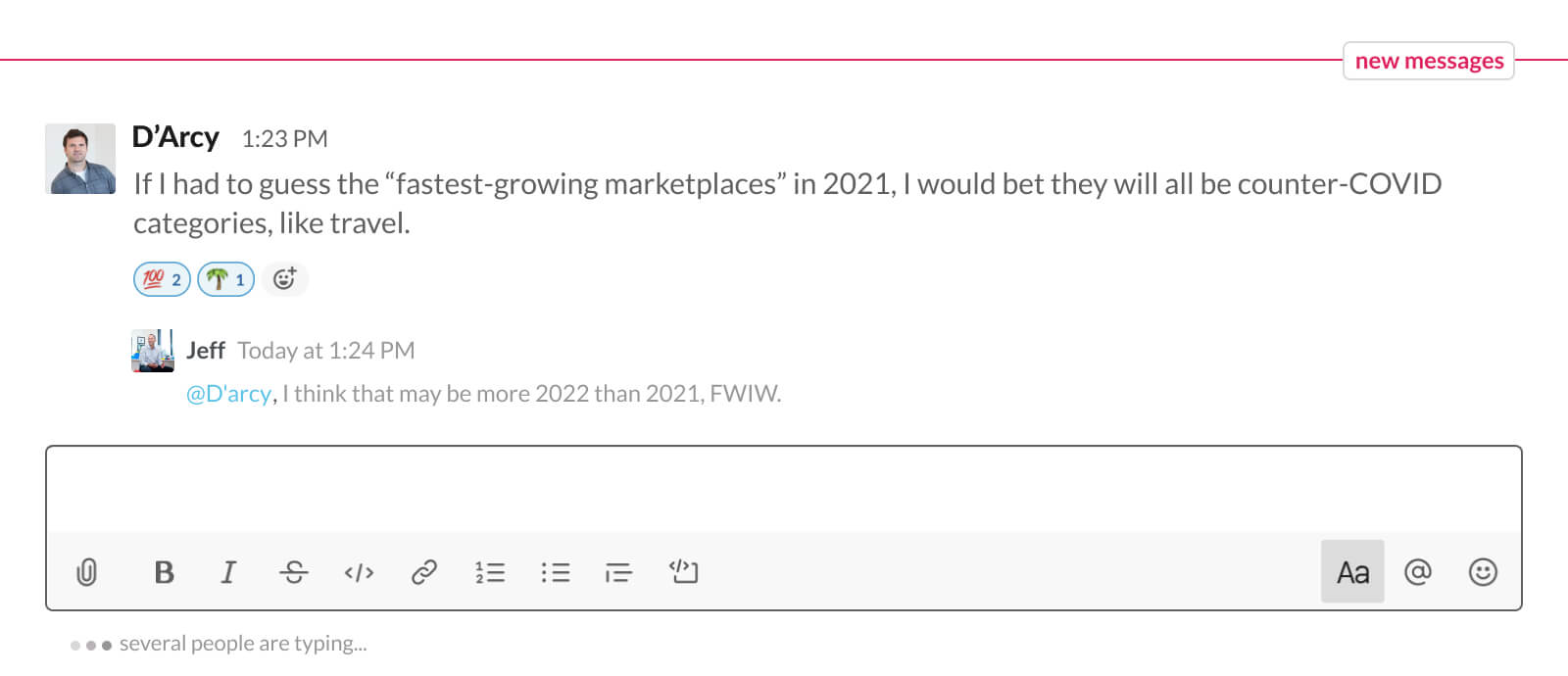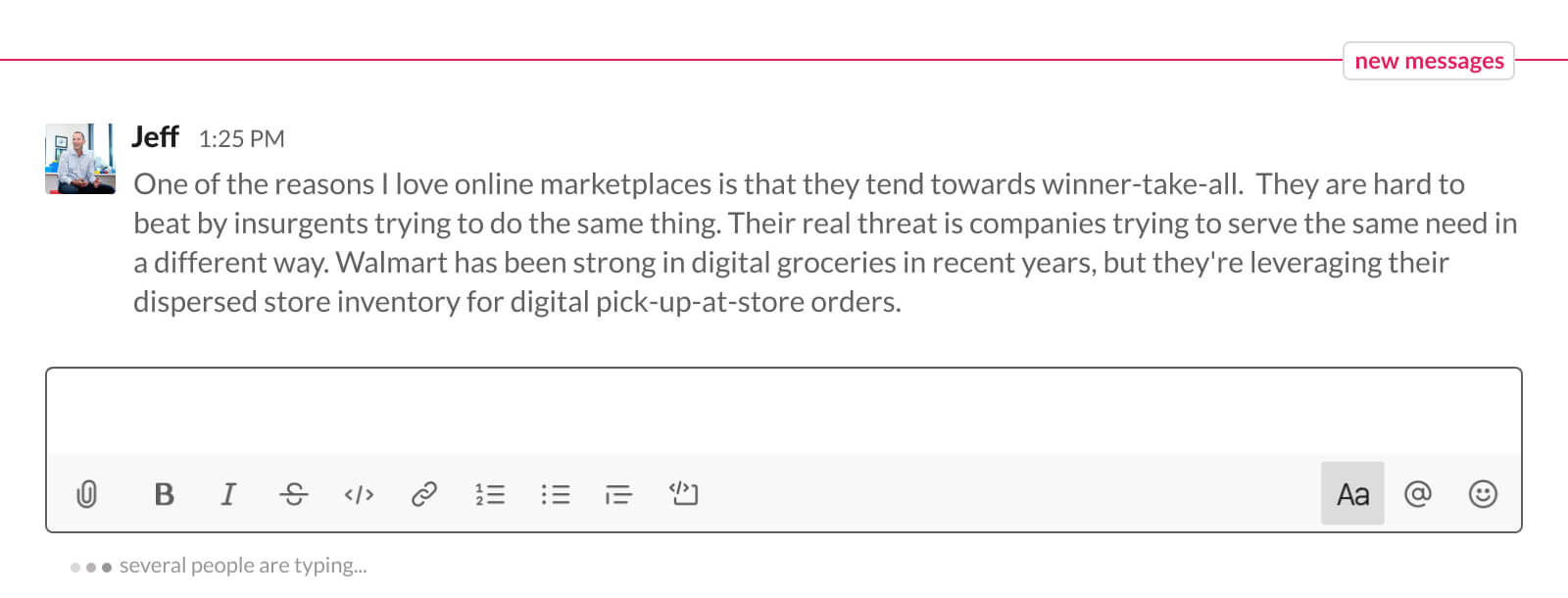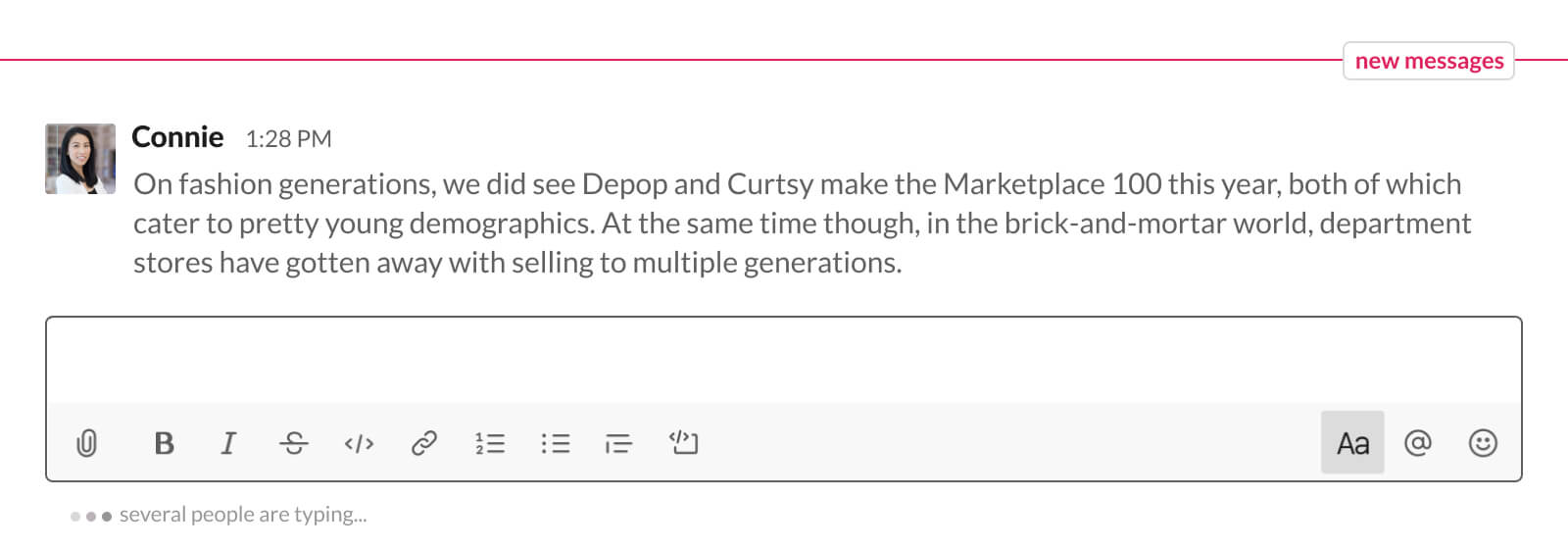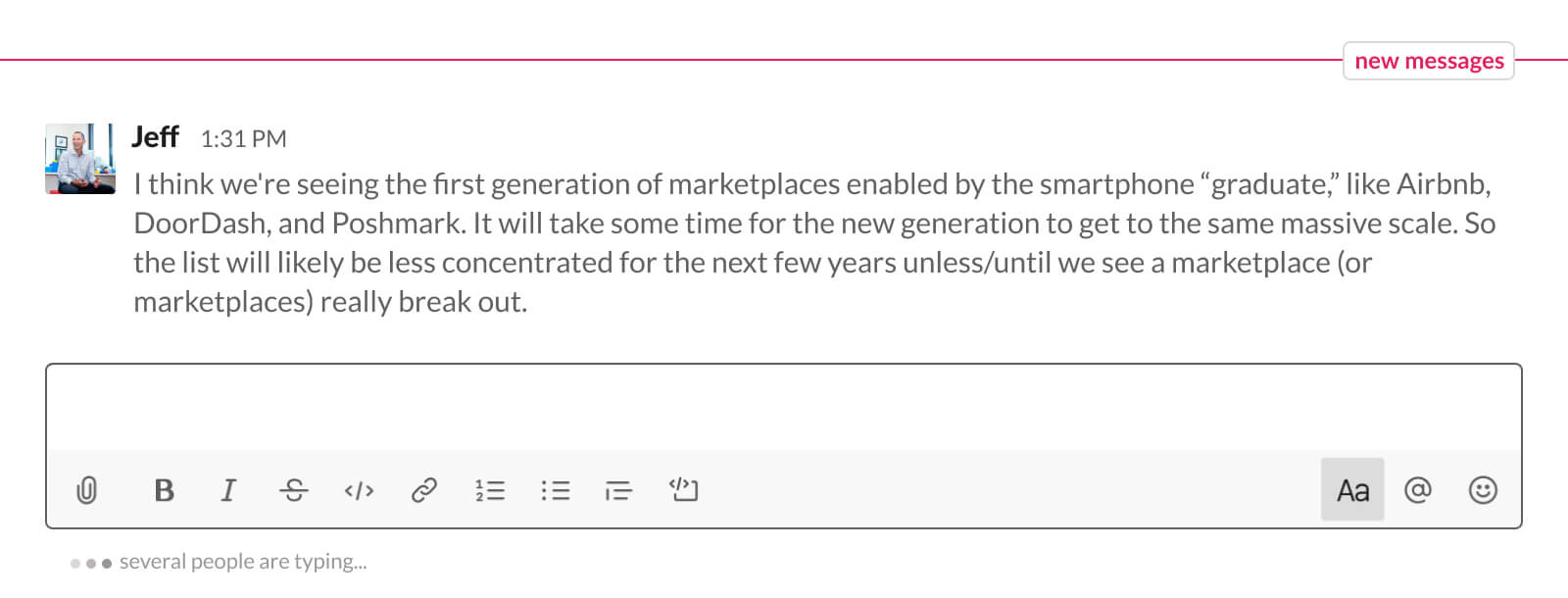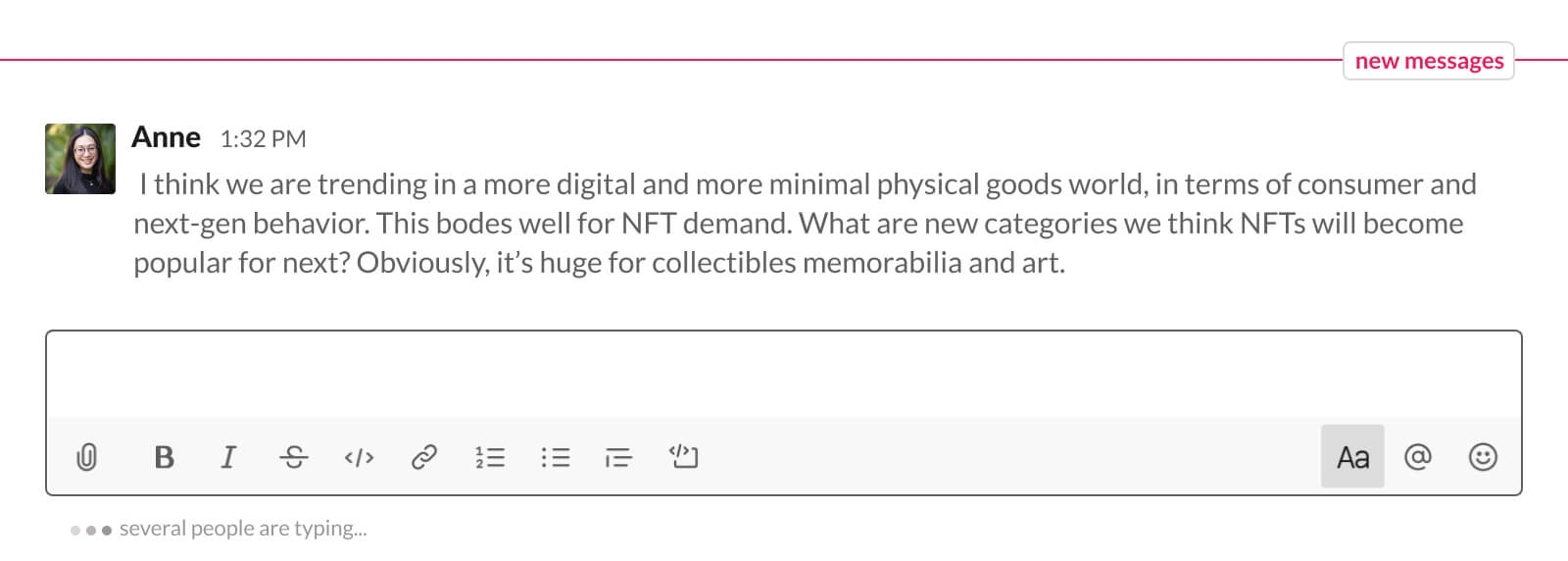The a16z Marketplace 100 series explores the companies and trends behind largest and fastest-growing marketplace companies. See more at a16z.com/marketplace-100.
Surveying the 2021 marketplace landscape: Which COVID-propelled marketplace categories will accelerate and which will make a comeback this year? And will a tiny sliver of marketplace companies continue to dominate GMV, or will we see reshuffling in the Marketplace 100 ranks?
D’Arcy: I think a lot of the categories that grew really fast in 2020 will experience a “come back to earth” period. But I don’t think we’re ever going back to where they were in 2019. Behaviors have changed and a lot of these categories have gotten to a scale where they work really well.
Anne: Agree, @D’Arcy. It only takes six weeks to form a habit, and habits have totally changed over the past year. I predict digital learning will accelerate post-COVID: edtech products for kids and college students, grad school replacements, etc. Learning has adapted to an online era—teachers of all kinds are now comfortable in a digital format, and tools have been built to support that. Also, as COVID reshapes the labor market, there are lots more people who need to learn new knowledge and/or skills.
Jeff: Doing interactions remotely will persist. We all were forced into an experiment where we had to do things via video—and it turns out a lot of things work well via video. Telemedicine worked great. Shopatainment worked great. *Not* doing a ton of business travel worked great.
Brandon: I also think there are a bunch of categories that will accelerate due to their proven flexibility, like travel: 2019 was dominated by flight/long-distance trips, but 2020 saw growth through outdoor experiences and RVing. Seems there will always be demand for travel, one way or another.
Anne: Sports and fitness is an interesting area where I see a hybrid—those that love the in-person peer pressure or energy of studio workouts will probably return IRL.
Jonathan: As the resident gamer on the team, I’ll note that games were very popular during the pandemic and I expect that to continue. Valve dominated spending at the #2 spot on the Marketplace 100, trailing only Instacart.
Anne: Working from home, too? We all invested in home office set-ups and space!
Jonathan: Definitely. My home office is now > real office
Connie: +1 to things not going back to where they were in 2019. Many working parents who got a taste of working from home, for example, have shifted their parenting habits. Some of that they’ll want to keep.
Brandon: @Connie definitely, childcare marketplaces really struggled last year. It will be interesting to see how they adjust. Most of those marketplaces were virtually out of operation from March-June as they adjusted to COVID.
Jeff: We just surveyed our portfolio companies about their post-COVID work plans, and only a few plan to go back to the way things were pre-COVID. Remote work is here to stay, hybrid work models (some WFH and some in-person) are here to stay.
Bryan: With COVID receding, though, I think any marketplace category that heavily touches on the IRL world—living, traveling, entertainment—will make a comeback.
Jonathan: Looking at the Marketplace 100, which categories are winner-take-all and which ones are not, potentially paving the way for new marketplace entrants? Instacart (#1) and Valve (#2) feel like they have potentially unassailable market share. In games, in particular, Valve has dominated for years as game marketplaces have strong network effects. You want to be on the same platform that the majority of your friends play on, which creates winner-take-all dynamics. There aren’t any other “freshmen” in the games category on the Marketplace 100 this year—and not for lack of trying!
On the other hand, fashion, food & beverage seem like they’re not winner-take-all, given a wide gamut of customer preferences on the demand-side and regional players on the supply-side. Thoughts?
D’Arcy: Marketplaces tend to have pretty strong network effects, which makes most of these categories winner-take-all, at least for the category that they exist in. I think fashion is probably a few sub-categories, in reality. And some of the marketplaces are more local, which can let more players emerge
Bryan: The operationally heavy marketplace companies that tend to have their cost divided by larger N count as they scale tend to have a winner-take-all approach, as it becomes harder to compete with them for upstarts. And as @D’Arcy said, network effects kicking in really lead to winner-takes-most dynamics.
Anne: There could be a generational thing here, too. As newer generations adopt tech and look for marketplaces to do X, there could be new entrants. For example, in the fashion resale category, eBay came first, then The RealReal, Poshmark, ThredUp, and now Curtsy is a Gen Z-first platform.
Jonathan: Good point @Anne! Younger folks shopping for collectibles, for example, may not want to go on eBay anymore and might opt for a new shopping experience
Sriram: +1 on the generational point. While not a classic marketplace, apps like Cameo or even TikTok/Snap are marketplaces of human attention. They’re very much about a generational shift. I do think someone is going to make the “Safe for Work OnlyFans” work and will be a generational company when it does.
D’Arcy: To @Anne’s point, the generational angle might be why we see categories like fashion have multiple players, whereas grocery delivery only has one.
Jeff: Even us old people aren’t shopping for collectibles on eBay anymore!
Anne: Instant gratification has been exacerbated by the on-demand era and Amazon Prime.
Jonathan: Is the right play for a new marketplace startup to try to build a beachhead on a completely new vertical, then?
Jeff: It’s hard to find many completely new verticals. NFTs are a recent example, but Whatnot is selling a lot of the same things eBay sells…
D’Arcy: Sneaker marketplaces doing verification and authentication is great example of another attack vector on eBay
Anne: I think niche verticals are a good wedge. Previously, if you were fully local and IRL you could only connect with very few other collectible buyers and may have had to drive 20 to 30 minutes to get to a local store to do it. Whatnot brings this to you online, which opens up a global pool of potential connections or people you can trade with.
D’Arcy: I think a new vertical (like Cameo) is great but rare. Usually, it feels like a new form factor or user experience that is tailored to that product or vertical that feels like the right beachhead
Bryan: Related to a new beachhead, I think if a new player has an ability to identify, redefine, and attract most of the supply-side, it can lead to an interesting dynamic, so long as the demand exists. So for Whatnot as an example, having a majority of the collectibles sellers on your platform makes it harder to compete with it.
Jeff: @Bryan, I’m a believer that sellers will go wherever the buyers are over time. Sometimes you need to aggregate supply to make it attractive to buyers, like OpenTable had to do in restaurants. But the reason OpenTable thrived over time is that so many buyers (i.e., diners) used it.
Bryan: @Jeff, that’s interesting. So perhaps aggregating and circling supply is one way to “hack” growth in the early days, but ultimately needs to be about consumer / demand love.
Jeff: That’s my belief. The chicken-egg hack is different than the long-term defensibility.
D’Arcy: I’ve got a question: Structurally, 70 percent of the GMV in this year’s M100 was attributed to just *one* company (Instacart). Among #4-10, it was really close/competitive. Do you think that domination at the very top will continue this year?
Connie: I think that depends on how long companies decide to wait to go public. We had many companies graduate off the Marketplace 100 list this year.
Anne: I think COVID has given rise to a set of new emerging marketplaces and new consumer behaviors, so there’s a longtail of new ones all doing well
Bryan: Maybe it’s an extension of behavior from COVID persisting, too. Instacart, but also a Korean company, Coupang, could account for a massive share of wallet as the underlying scale and infrastructure starts address larger markets (e.g., grocery delivery to pharma delivery to anything)
D’Arcy: I agree with all that, but it’s all relative. Personally, this year feels like a very unique circumstance. Instacart is part of the first generation of mobile-first companies + network effects + COVID shock to demand side, etc.
Jonathan: I am curious if we’ll see a new generation of marketplaces built on the blockchain that break out onto the Marketplace 100 next year.
Jeff: Other ‘suppliers’ are most definitely paying attention. Jack Dorsey’s first tweet?!
Jeff: Other sports leagues will have NBA Top Shot envy…
Jonathan: I’m very excited about sneakers as NFTs. Where is the StockX / GOAT for digital sneakers and fashion more broadly?
Jeff: What’s unique about NFT’s is how fast purely digital supply could scale. So the big question is whether demand can keep up to pretty much unlimited supply….
D’Arcy: You’d need people to want to buy it, @Bryan
Sriram: I suspect we will see all forms of online content traditionally in social networks NFT-ised. Imagine, for example, every TikTok video having an “owner.” We’re also just getting started on the consumption experience. You can’t do a lot with owning a NFT. I expect that to rapidly change as you get to display social currency in interesting ways.
* * *
-

Jeff Jordan is an a16z General Partner focused on consumer companies.
-

Connie Chan is a General Partner at Andreessen Horowitz where she focuses on investing in consumer technology.
-

Sriram Krishnan Sriram Krishnan is a former general partner at Andreessen Horowitz where he worked on international strategy based out of London, UK.
- Follow
- X
-
D'Arcy Coolican D'Arcy Coolican is a partner on the investment team where he focuses on marketplaces, social networks, and consumer technology companies.
-

Jonathan Lai is a General Partner at Andreessen Horowitz, focused on a16z speedrun. He invests in early-stage teams building tomorrow’s AI x creative landscape—from developer tools to 3D simulations, vertical agents, and novel storytelling formats across video, games, audio, and more.
-

Anne Lee Skates is a partner on the consumer investing team, where her interests include gen-Z consumer trends, retail and commerce infrastructure, and the future of cities.
-

Bryan Kim is a partner at Andreessen Horowitz, where he focuses on consumer tech and app-layer AI investments.
-
Brandon Barros



